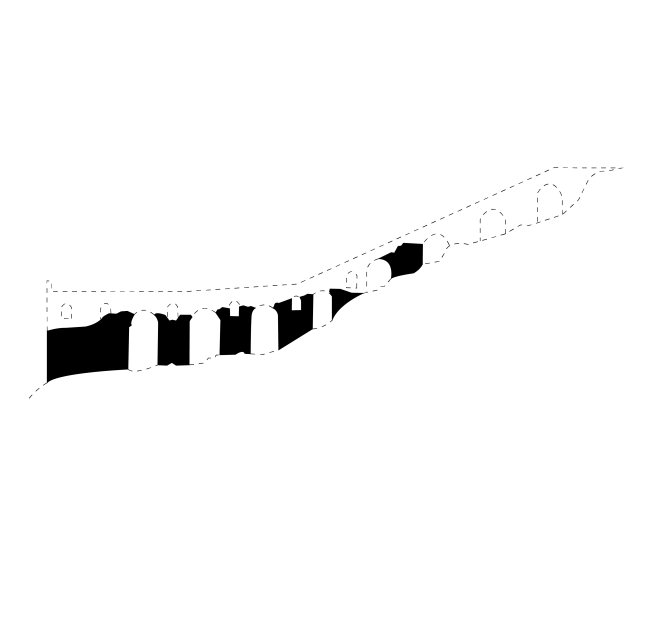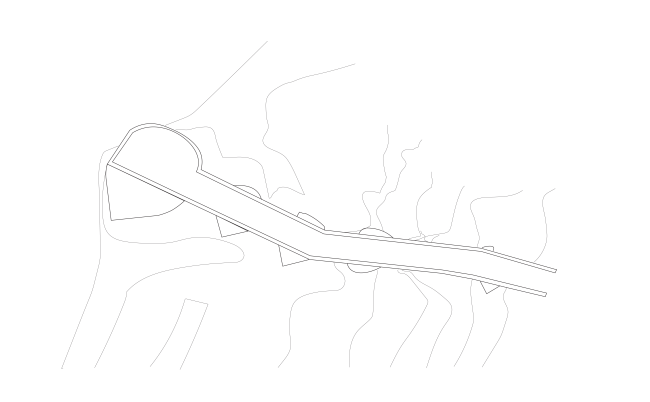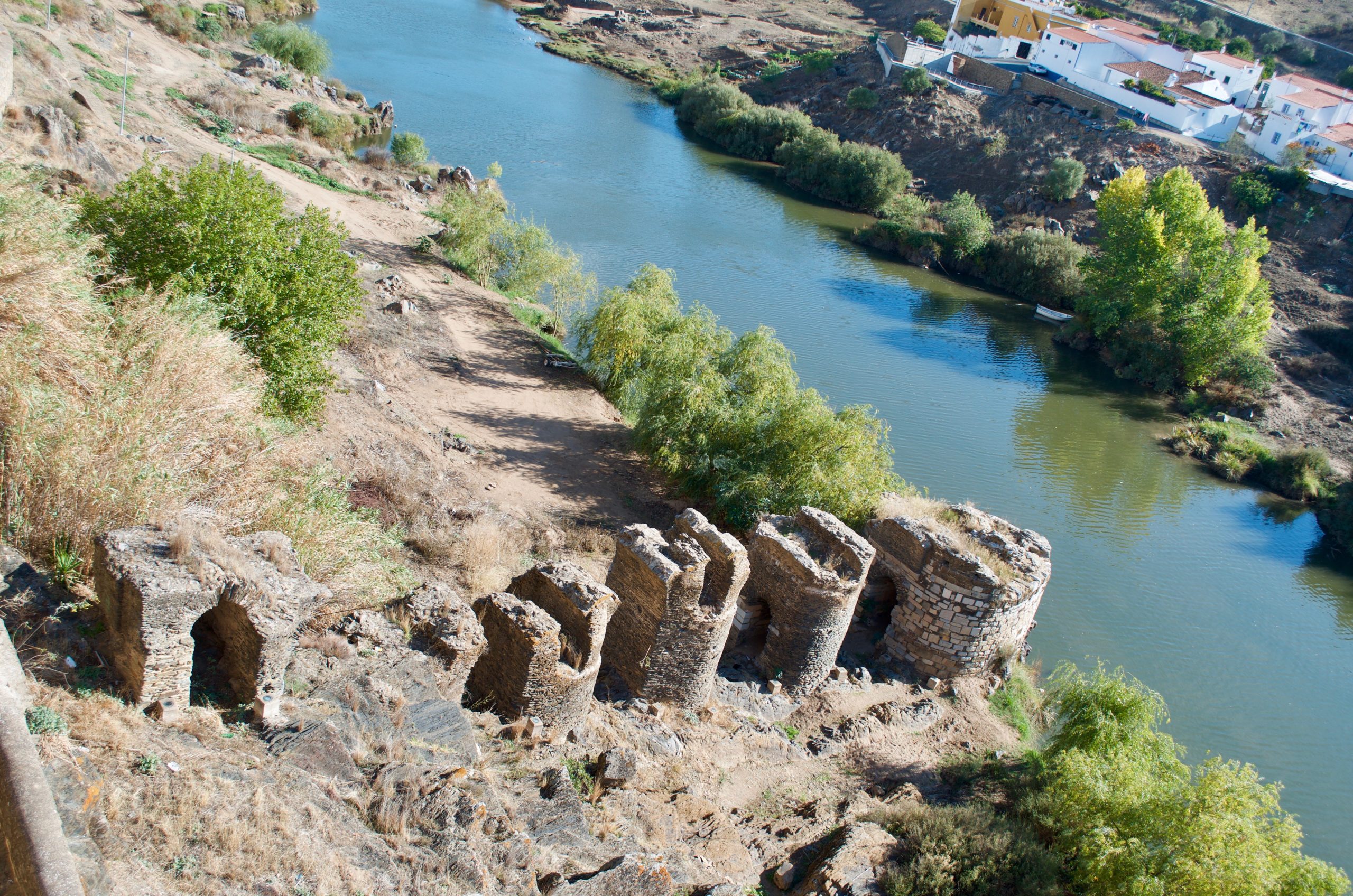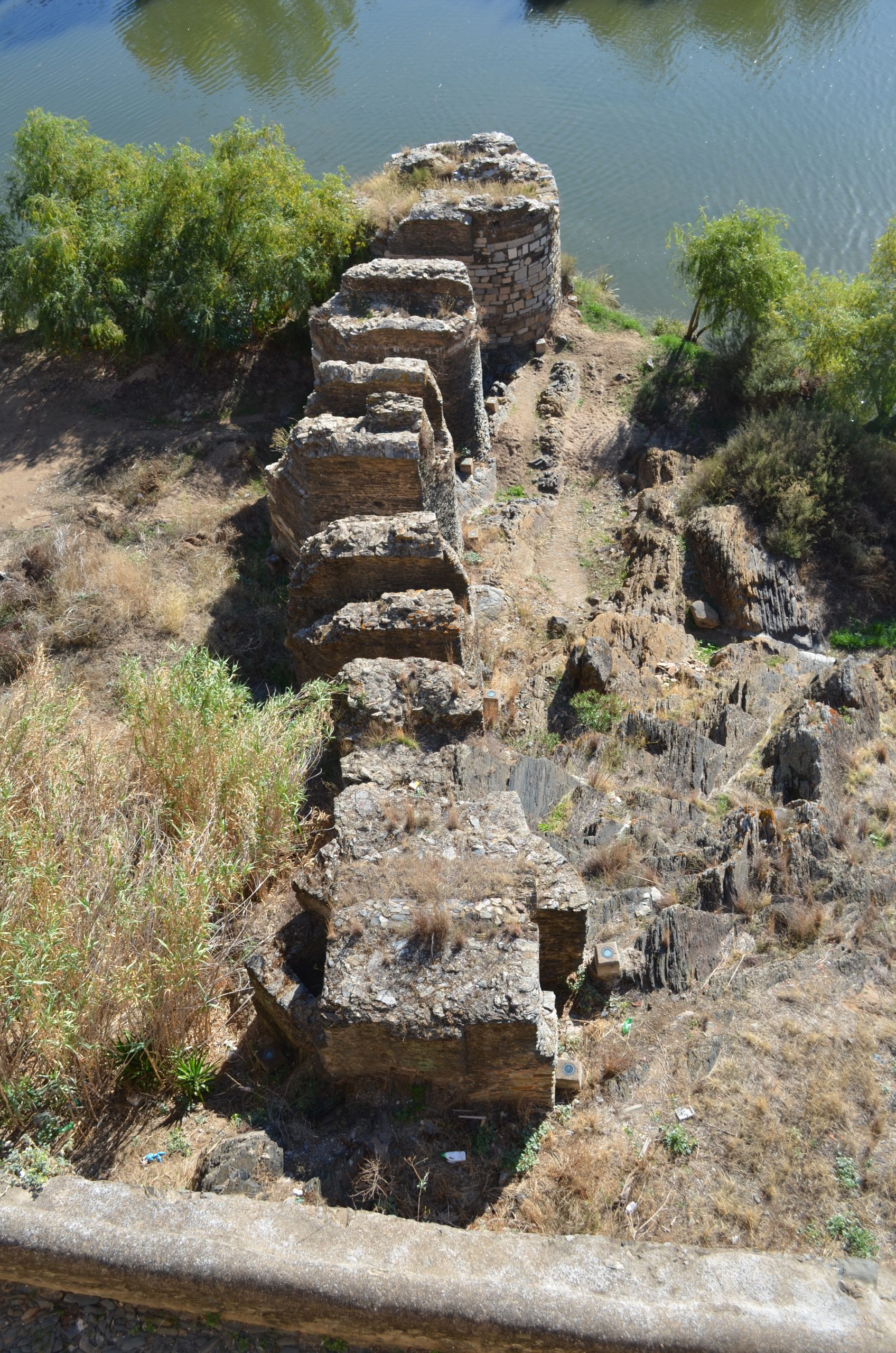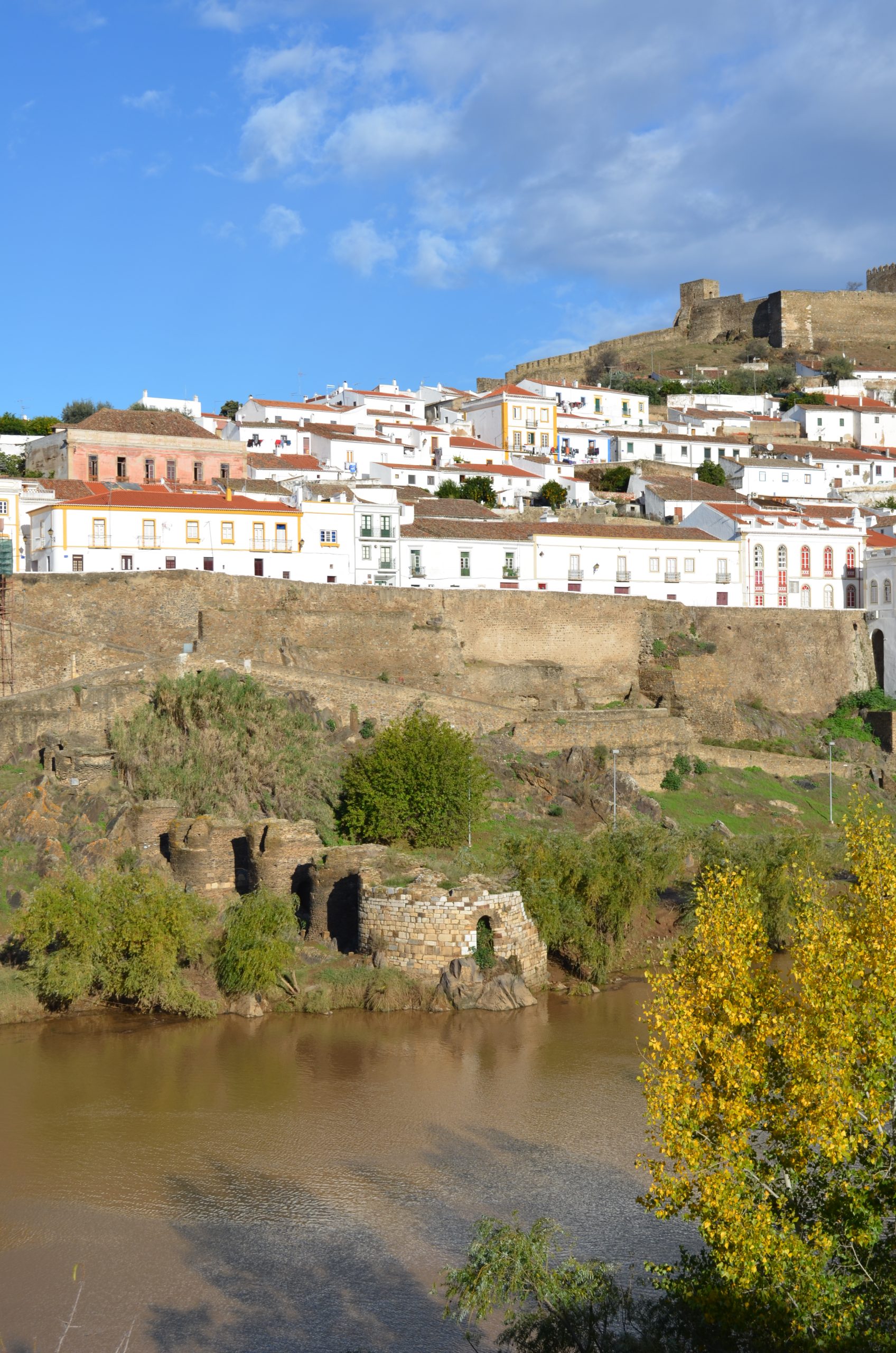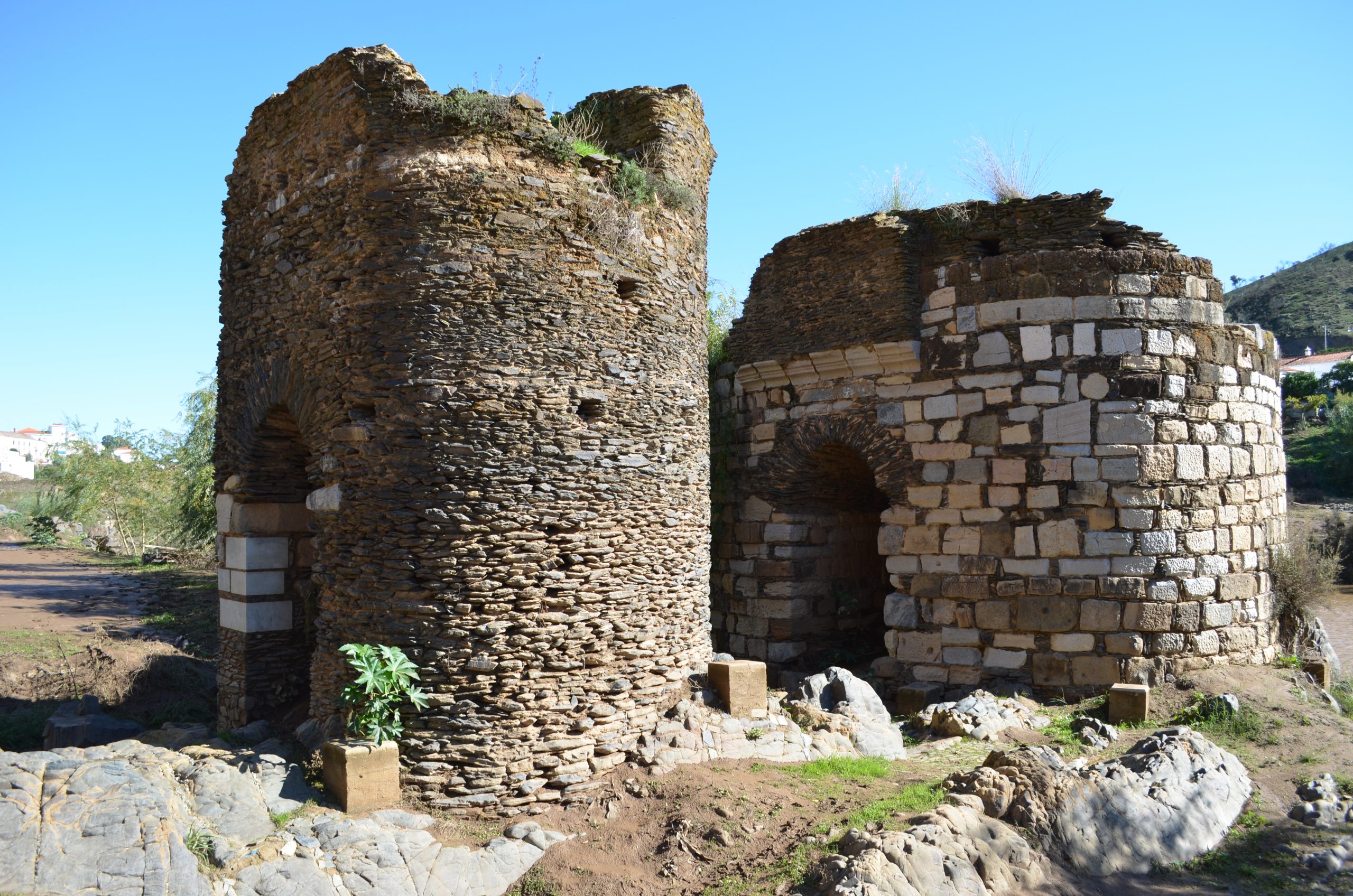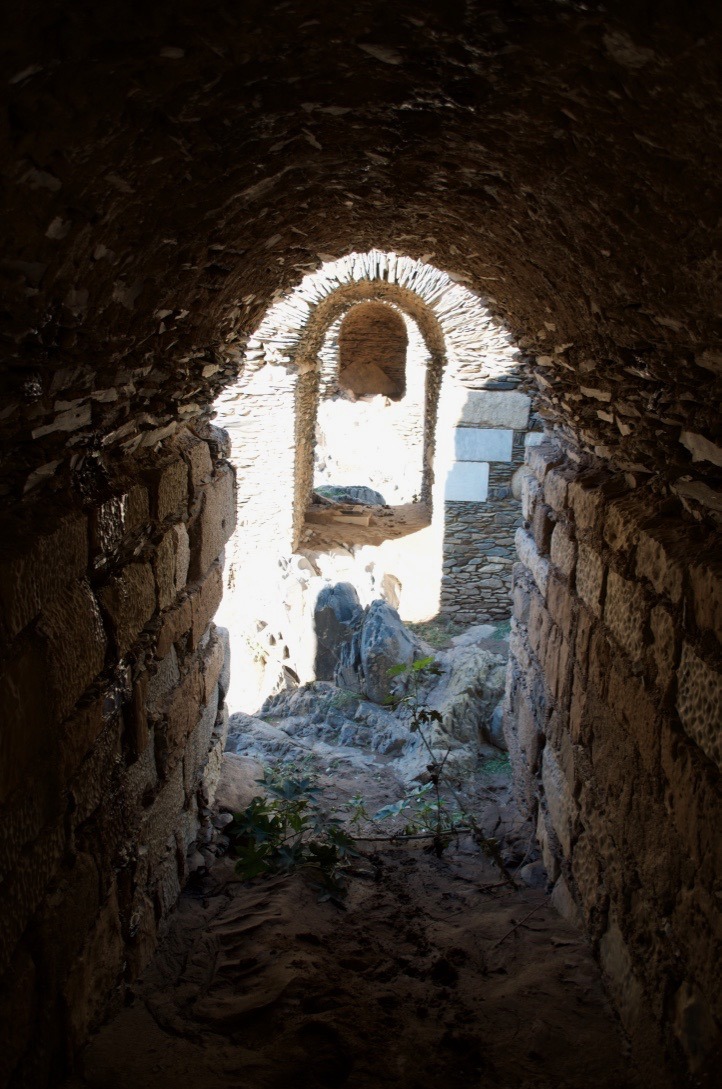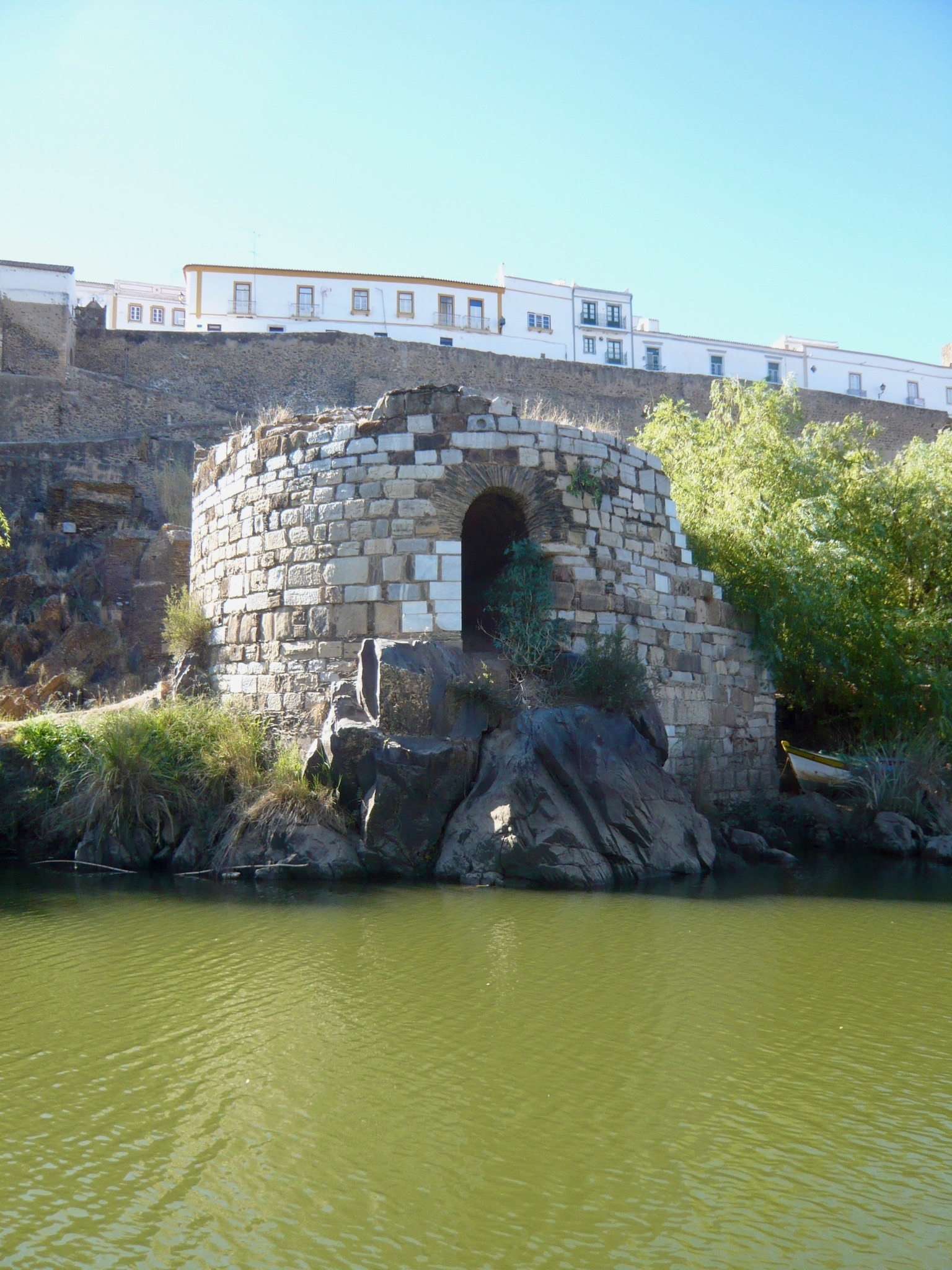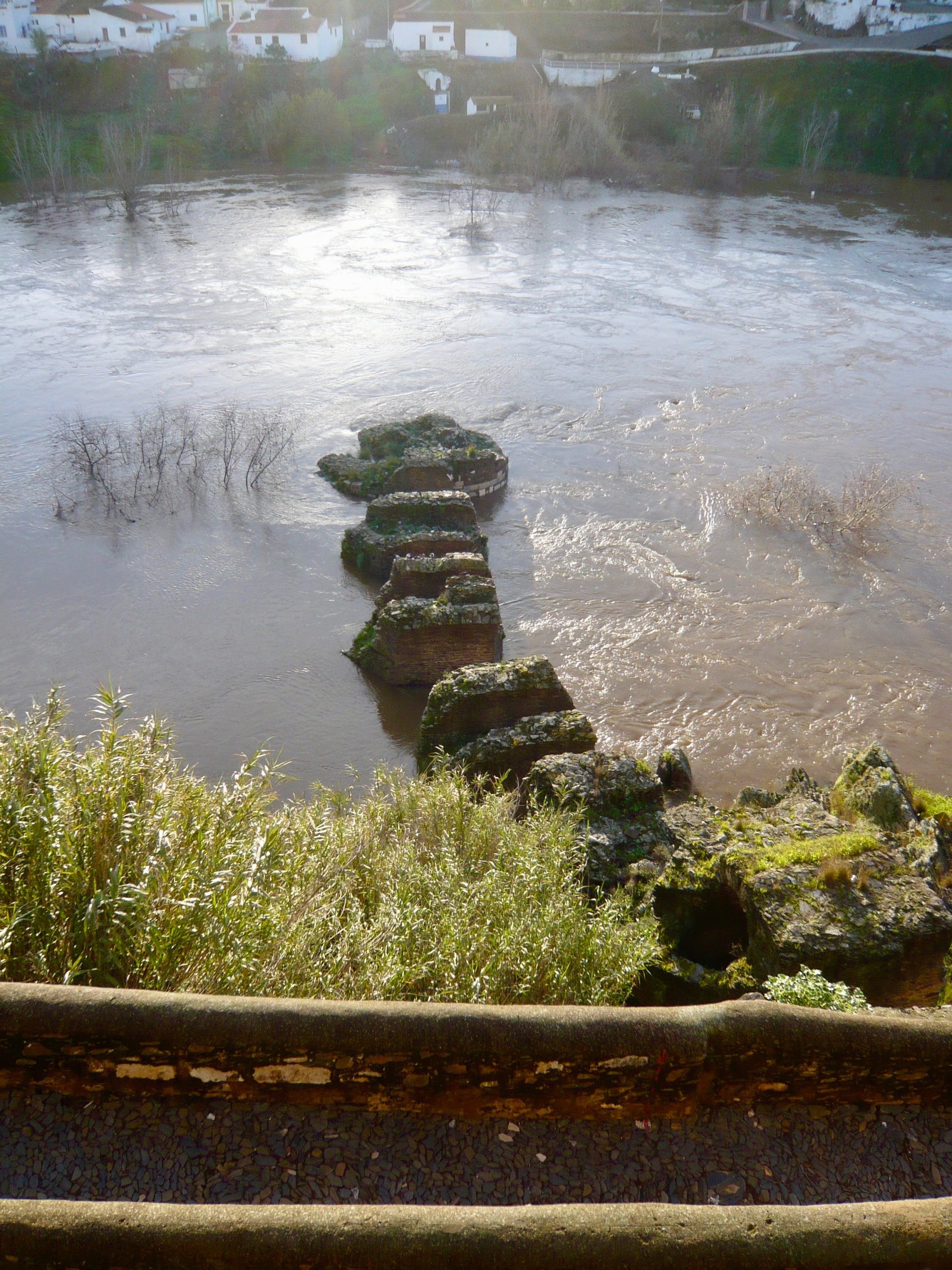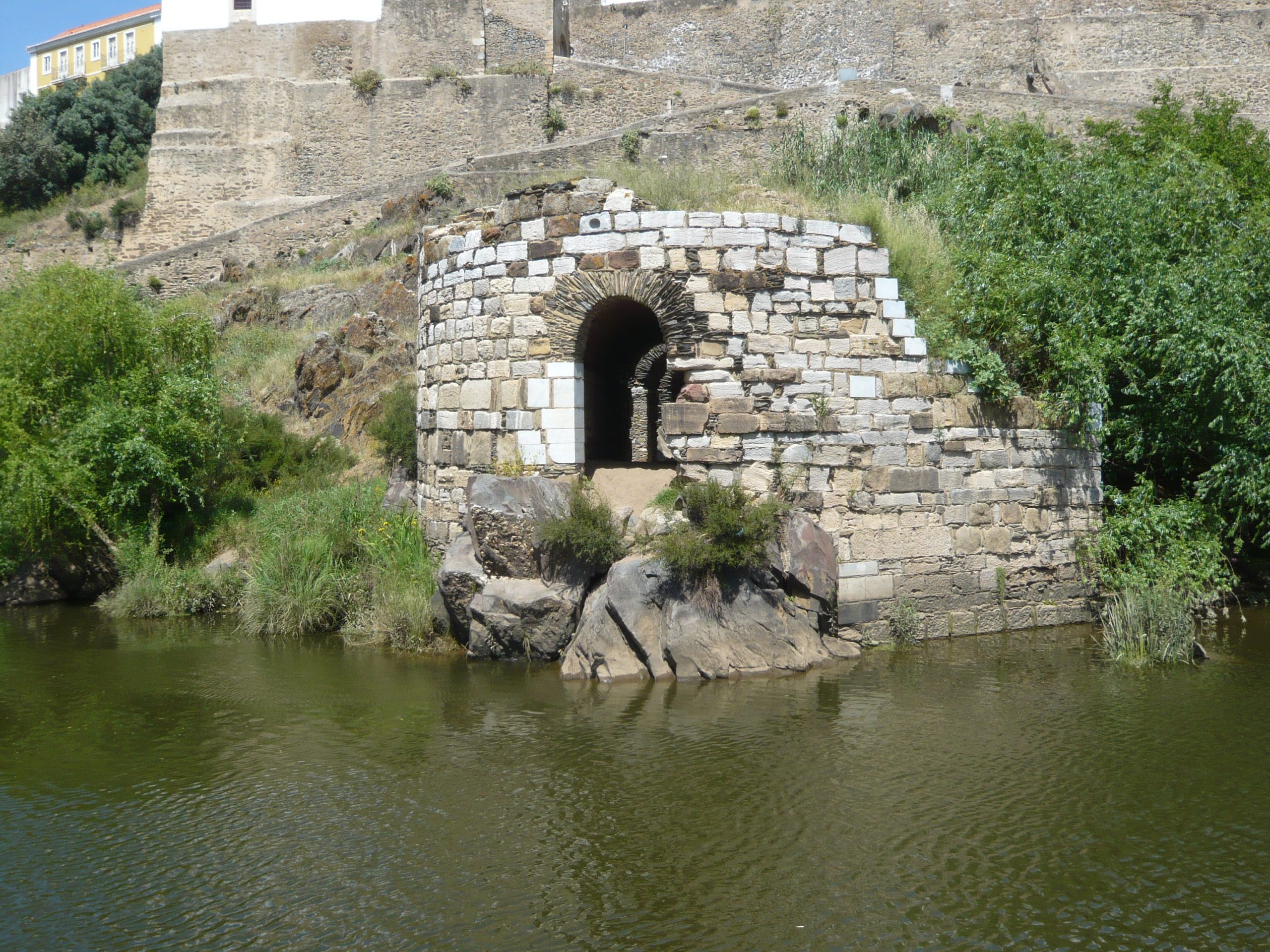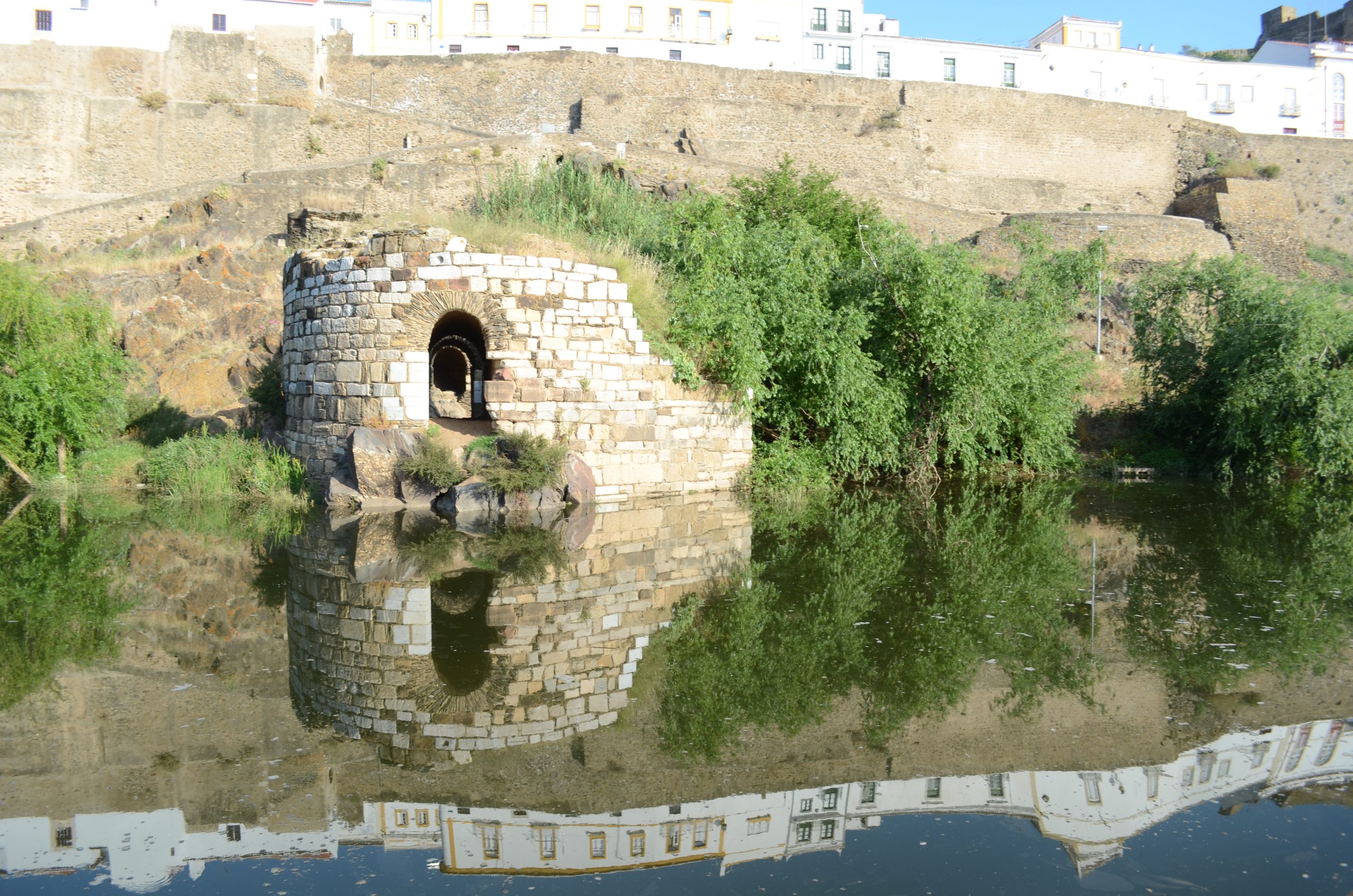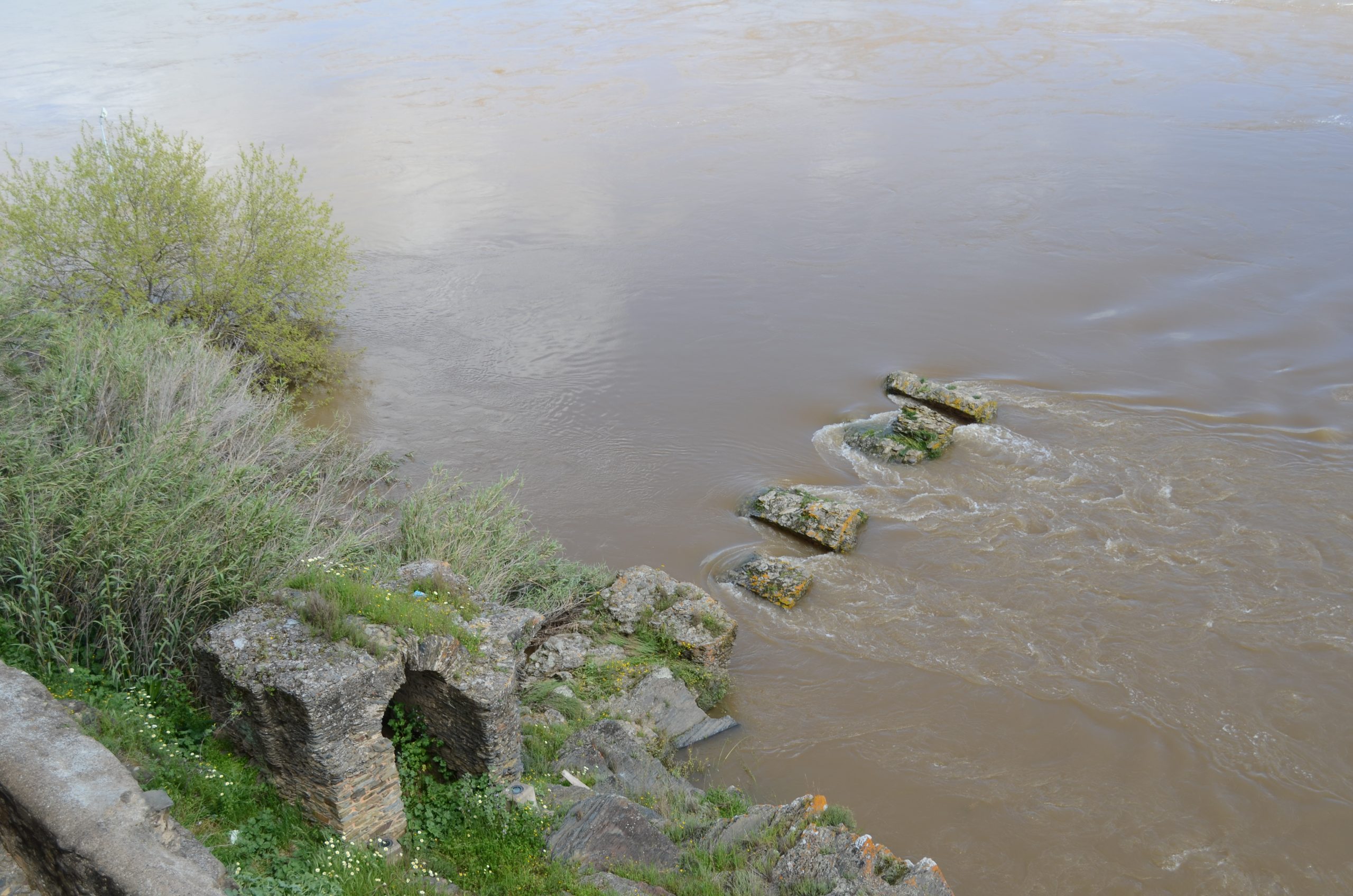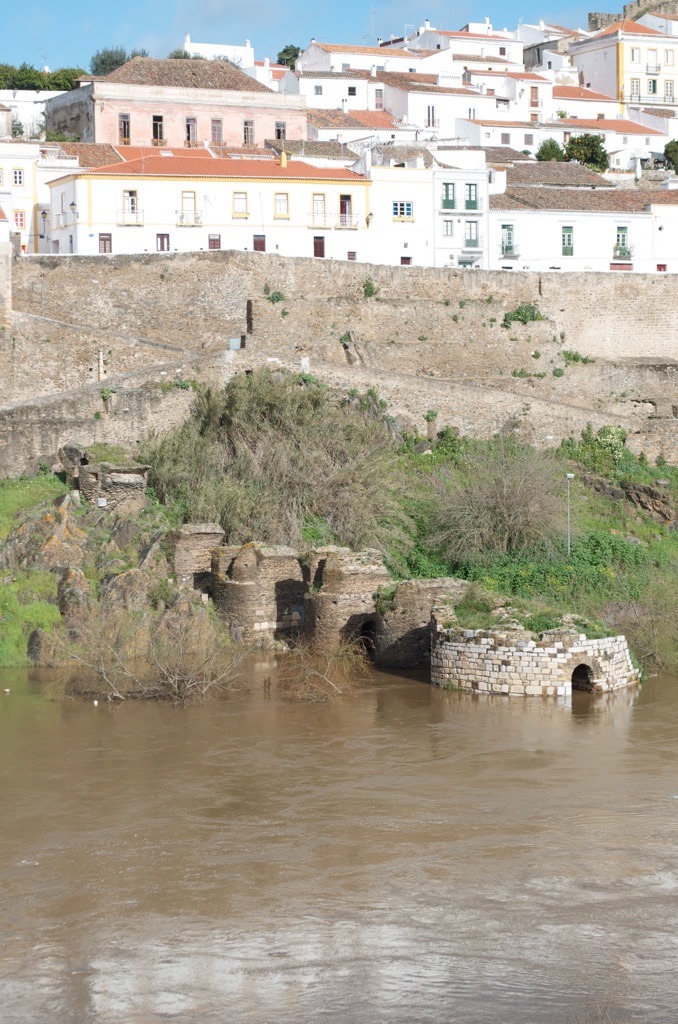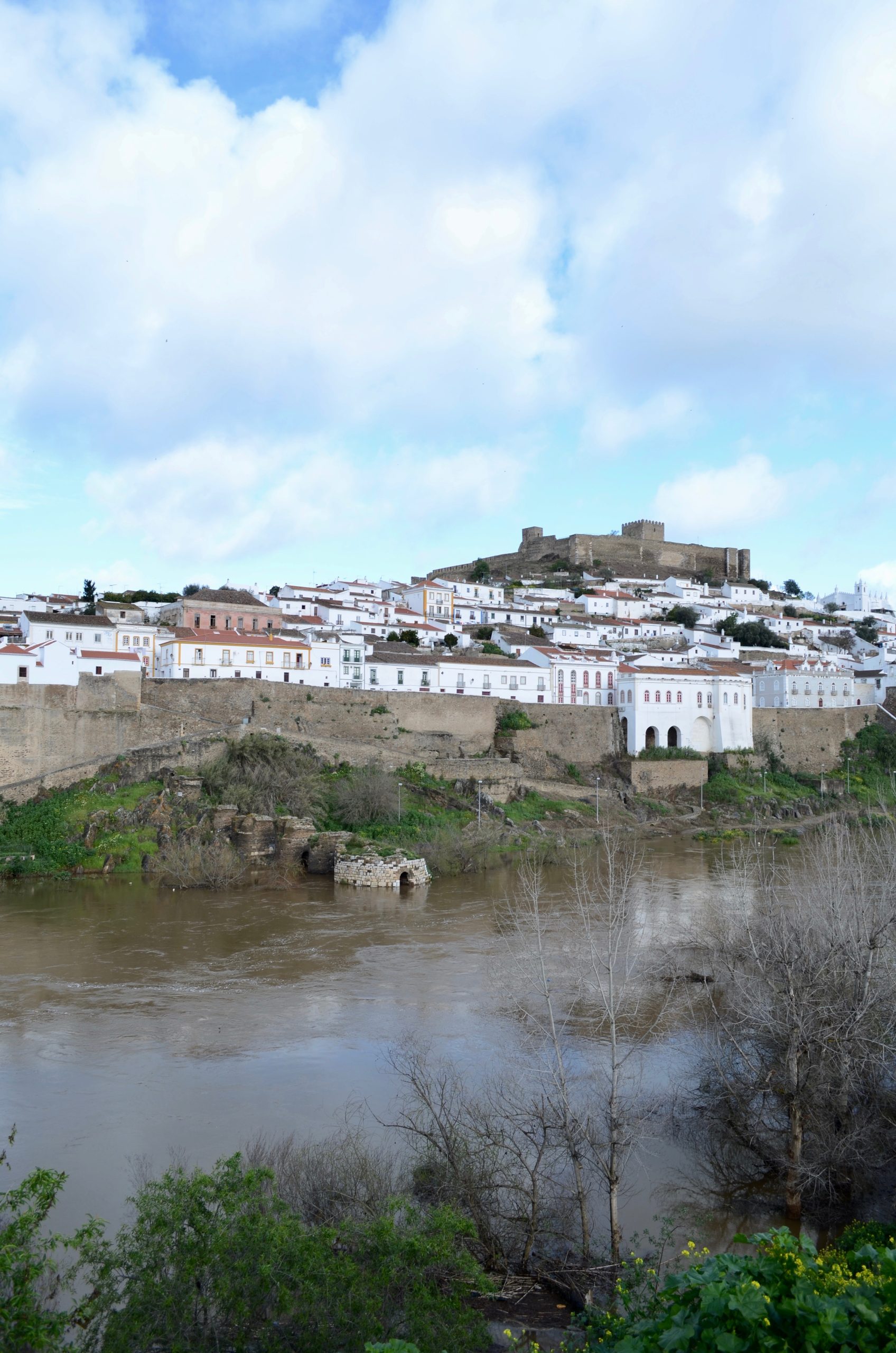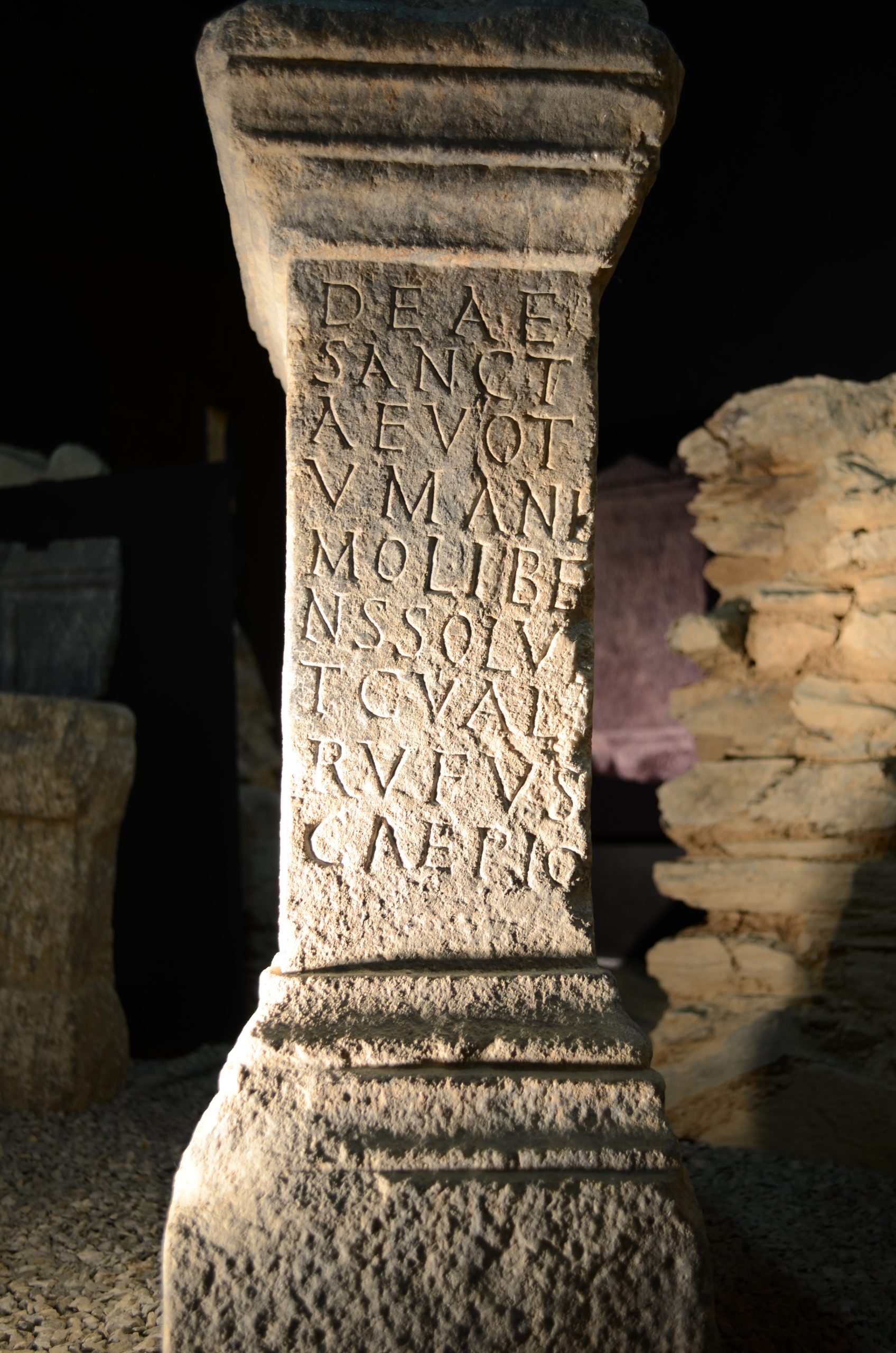Mértola
Torre do Rio
About
Torre do Rio
Torre do Rio, designated as a National Monument in 1910, has been interpreted in various ways. It was once considered a bridge or a structure connected to the wall used to capture river water with a waterwheel. It is currently believed that it was just an extension of the wall up to the river, which could provide easy access to this waterway in case of need. It could also be used as a defence and a means to control the port area: a chain could be placed between both banks to prevent access to the Northern area through the river. On its top end, near the Guadiana, a wood crane facilitated loading and unloading operations between the city and its port.
Its construction may have occurred between the 4th and the 6th centuries, reusing many architectural elements from the Roman era (lintels and shafts, for example), made of limestone, marble, and granite, alternated with local stone (schist). The mortar connecting these elements is quite good since it has resisted the wear of time (more than the stone used in the construction), and especially Guadiana’s great floods.
This structure is approximately 50 meters long. It consists of seven arches, of which only the initial part remains, and seven pillars that, upstream from the Guadiana River, have breakwaters to resist flow intensity during river floods.
Access
Prepare your visit
Access to this monument is free. It is located on the right bank of the Guadiana River, outside the old town of Mértola. Visits are not recommended at night, as there is no lighting. Children must always be accompanied by a responsible adult.
Reduced mobility
Although access is made through a walking trail, it is not recommended for visitors with reduced mobility, especially wheelchairs, since an irregular rock outcrop underlies this structure.
Support
RESEARCH
Bibliography & useful links
ALARCÃO, Jorge de (1988). Roman Portugal: Gazetteer, Volume II, Fasc. 3 – Évora, Faro & Lagos. Aris & Philips LTD, Warminster, pp. 201-203.
BOIÇA, Joaquim Manuel Ferreira; MATEUS, Rui (2014). Mértola: Roteiro de história urbana e património. Associação de Defesa do Património de Mértola, Mértola, p. 198.
GÓMEZ MARTíNEZ, Susana (2022). Poblamiento Emiral en el Garb Al-Andalus. In Arqueologia & História, A Península Ibérica entre os séculos V e X – Continuidades, Transição e Mudança, 73, Associação dos Arqueólogos Portugueses, Lisboa, pp. 187-206. Disponível em: https://www.museuarqueologicodocarmo.pt/publicacoes/arqueologia_historia/serie_13/Vol_73/P1_art15_AH_Vol73_web.pdf [Consultado a 27 de março de 2023].
GÓMEZ MARTÍNEZ, Susana; LOPES, Virgílio (2008). La Torre del Río de Mértola. Una estrutura portuária tardorromana. In Strutture e insediamenti antichi e medieval funzionali alla viabilità commerciale terrestre e marittima, Atti del Convegno, 4 Aprile 2008, Roma, Pieraldo Editore, Roma, pp. 15-48. Disponível em: http://hdl.handle.net/10400.26/2718 [Consultado a 27/03/2017].
LOPES, Virgílio (2003). Mértola na Antiguidade Tardia: a topografia histórica da cidade e do seu território nos alvores do cristianismo. Campo Arqueológico de Mértola, Mértola, pp. 86 -89.
LOPES, Virgílio (2014a). Mértola na Antiguidade Tardia. In O Sudoeste Peninsular entre Roma e o Islão. Campo Arqueológico de Mértola, Mértola, pp. 138-165.
LOPES, Virgílio (2014b). Mértola e o seu território na antiguidade tardia (séculos IV-VIII). Tese de Doutoramento apresentada ao Departamento de Historia I da Universidad de Huelva. Disponível em: http://hdl.handle.net/10272/8053 [Consultado a 27/03/2023].
LOPES, Virgílio (2015). La Antigüedad tardía en Mértola. In Onoba, 3, pp. 105-128. Disponível em http://hdl.handle.net/10272/10772 [Consultado a 27/03/2023].
LOPES, Virgílio (2017). Mértola na Antiguidade Tardia. A Topografia Histórica. In ARNAUD, José Morais; MARTINS, Andrea, Arqueologia em Portugal: 2017 – Estado da Questão, Associação dos Arqueólogos Portugueses, Lisboa, pp. 1379-1390. Disponível em: http://museuarqueologicodocarmo.pt/publicacoes/outras_publicacoes/II_congresso_actas/Artigo103_ArqPort_2017.pdf [Consultado a 28/03/2023].
LOPES, Virgílio (2022). Mértola e o seu território na Antiguidade Tardia. In Arqueologia & História, A Península Ibérica entre os séculos V e X – Continuidades, Transição e Mudança, 73, Associação dos Arqueólogos Portugueses, Lisboa, pp. 107-119. Disponível em: https://www.museuarqueologicodocarmo.pt/publicacoes/arqueologia_historia/serie_13/Vol_73/P1_art07_AH_Vol73_web.pdf [Consultado a 27 de março de 2023].
MACIAS, Santiago (2005). Mértola: O último porto do Mediterrâneo. Catálogo da exposição Mértola – história e património: séculos V-XIII, vol. I. Campo Arqueológico de Mértola, Mértola, pp. 194-198.
MAN, Adriaan de (2011). Stvdia Lusitana VI: Defesas Urbanas Tardias da Lusitânia. Museo Nacional de Arte Romano, Mérida, p. 228.
VALENTE, J. Pulido, J. C. Almeida OLIVEIRA, e M. Pereira dos SANTOS (1982). “Ara votiva de Mértola (Conventus Pacensis).” In Ficheiro Epigráfico, I. Instituto de Arqueologia – Universidade de Coimbra, Coimbra, pp. 3-5. Disponível em: https://www.uc.pt/fluc/iarq/pdfs/Pdfs_FE/FE_001_1982 [Consultado a 27/03/2023].
VEIGA, Estácio da (1983). Memória das Antiguidades de Mértola, Edição fac-similada de 1880. Imprensa Nacional / Câmara Municipal de Mértola, Lisboa, p. 129.
